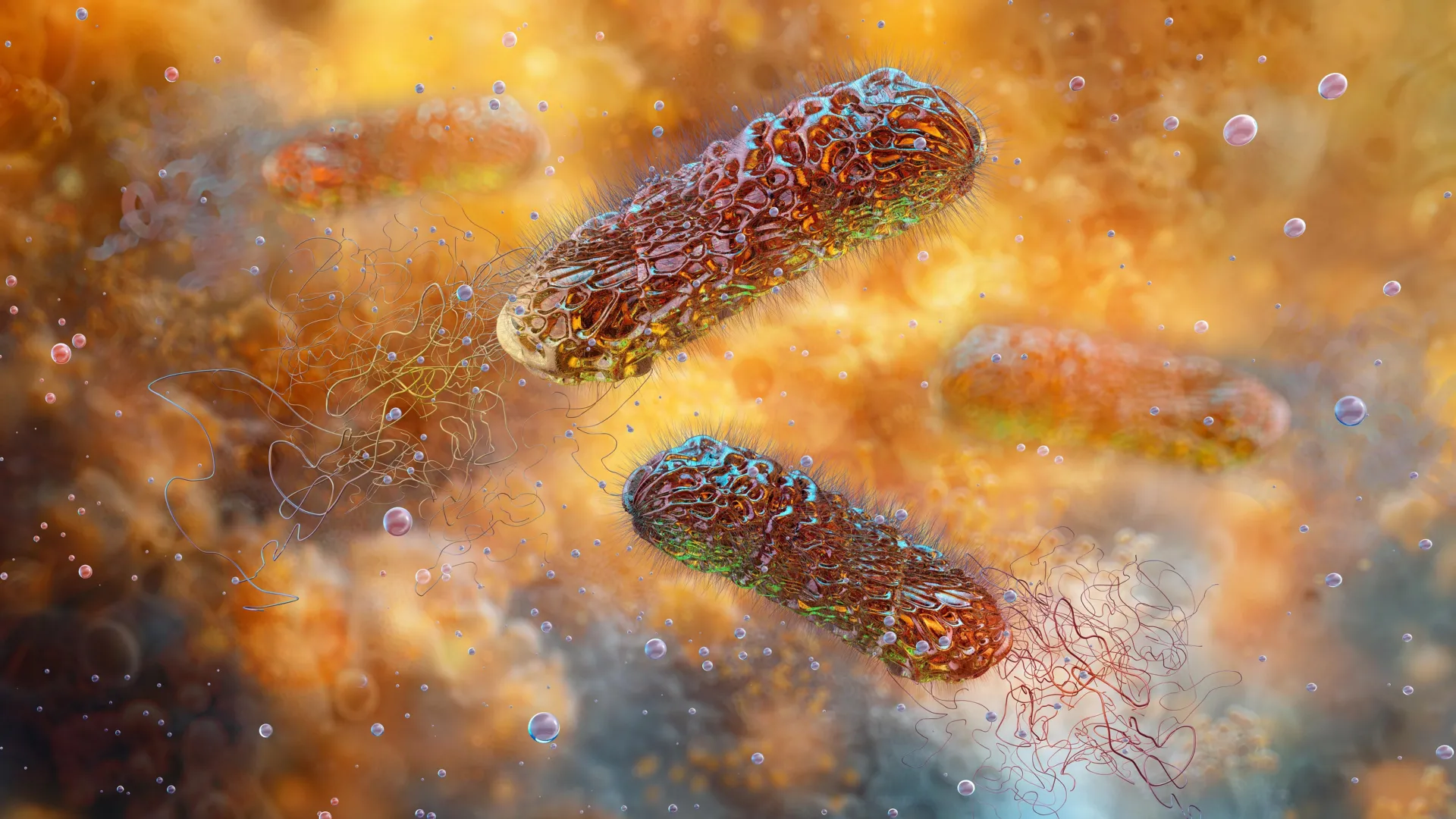Scientists find hidden antibiotic 100x stronger against deadly superbugs
Chemists discovered a powerful hidden antibiotic that’s 100 times stronger than existing ones and effective against deadly superbugs.
- Date:
- October 29, 2025
- Source:
- University of Warwick
- Summary:
- A team of scientists discovered a hidden antibiotic 100 times stronger than existing drugs against deadly superbugs like MRSA. The molecule had been overlooked for decades in a familiar bacterium. It shows no signs of resistance so far, offering hope in the fight against drug-resistant infections and paving the way for new approaches to antibiotic discovery.
- Share:

Chemists from the University of Warwick and Monash University have identified a promising new antibiotic that can combat drug-resistant bacterial infections, including MRSA and VRE.
Antimicrobial resistance (AMR) is considered one of the most serious threats to global health. The World Health Organization (WHO) recently warned that there are "too few antibacterials in the pipeline" and that most easily discoverable antibiotics have already been found. Because developing new antibiotics is costly and offers limited financial reward, few pharmaceutical companies are investing in this critical area.
Discovery of a Hidden Antibiotic Intermediate
In a recent paper in the Journal of the American Chemical Society, researchers from the Monash Warwick Alliance Combatting Emerging Superbug Threats Initiative reported the discovery of a potent new antibiotic called pre-methylenomycin C lactone. The compound had been "hiding in plain sight" as an intermediate chemical in the natural process that produces the known antibiotic methylenomycin A.
Professor Greg Challis, co-lead author from the Department of Chemistry at the University of Warwick and the Biomedicine Discovery Institute at Monash University, explained: "Methylenomycin A was originally discovered 50 years ago and while it has been synthesized several times, no-one appears to have tested the synthetic intermediates for antimicrobial activity! By deleting biosynthetic genes, we discovered two previously unknown biosynthetic intermediates, both of which are much more potent antibiotics than methylenomycin A itself."
A 100-Fold Boost in Antibacterial Strength
When tested, one of these intermediates -- pre-methylenomycin C lactone -- proved to be over 100 times more active against a range of Gram-positive bacteria than methylenomycin A. It was particularly effective against Staphylococcus aureus and Enterococcus faecium, the bacterial species responsible for Methicillin-resistant Staphylococcus aureus (MRSA) and Vancomycin-resistant Enterococcus (VRE).
Co-lead author Dr. Lona Alkhalaf, Assistant Professor at the University of Warwick, said: "Remarkably, the bacterium that makes methylenomycin A and pre-methylenomycin C lactone -- Streptomyces coelicolor -- is a model antibiotic-producing species that's been studied extensively since the 1950s. Finding a new antibiotic in such a familiar organism was a real surprise."
She added that it appears S. coelicolor may have originally evolved to produce a strong antibiotic (pre-methylenomycin C lactone), but over time shifted toward making methylenomycin A, a weaker version that could serve a different biological role.
Encouragingly, the research team found no evidence of bacterial resistance to pre-methylenomycin C lactone in Enterococcus under conditions that typically lead to resistance against vancomycin. Since vancomycin is often a "last-resort" treatment for these infections, this result is a particularly hopeful sign for addressing VRE, which the WHO lists as a high-priority pathogen.
A New Direction for Antibiotic Discovery
Professor Challis noted: "This discovery suggests a new paradigm for antibiotic discovery. By identifying and testing intermediates in the pathways to diverse natural compounds, we may find potent new antibiotics with more resilience to resistance that will aid us in the fight against AMR."
The next step in the development of the antibiotic will be pre-clinical testing. In a coordinated publication earlier this year in the Journal of Organic Chemistry, a team led by Monash collaborating with the Warwick team and funded by the Monash Warwick Alliance Combatting Emerging Superbug Threats initiative reported a scalable synthesis of pre-methylenomycin C lactone, paving the way for further research.
Professor David Lupton, School of Chemistry, Monash University who led the synthesis work says: "This synthetic route should enable the creation of diverse analogues that can be used to probe the structure−activity relationship and mechanism of action for pre-methylenomycin C lactone. The Centre to Impact AMR at Monash gives us a great platform to take this promising antimicrobial forward."
With its straightforward chemical structure, strong antibacterial power, apparent resistance-proof profile, and scalable production process, pre-methylenomycin C lactone stands out as a promising new candidate. It could ultimately help save many of the estimated 1.1 million lives lost each year to antimicrobial resistance.
Story Source:
Materials provided by University of Warwick. Note: Content may be edited for style and length.
Journal Reference:
- Christophe Corre, Gideon A. Idowu, Lijiang Song, Melanie E. Whitehead, Lona M. Alkhalaf, Gregory L. Challis. Discovery of Late Intermediates in Methylenomycin Biosynthesis Active against Drug-Resistant Gram-Positive Bacterial Pathogens. Journal of the American Chemical Society, 2025; DOI: 10.1021/jacs.5c12501
Cite This Page: